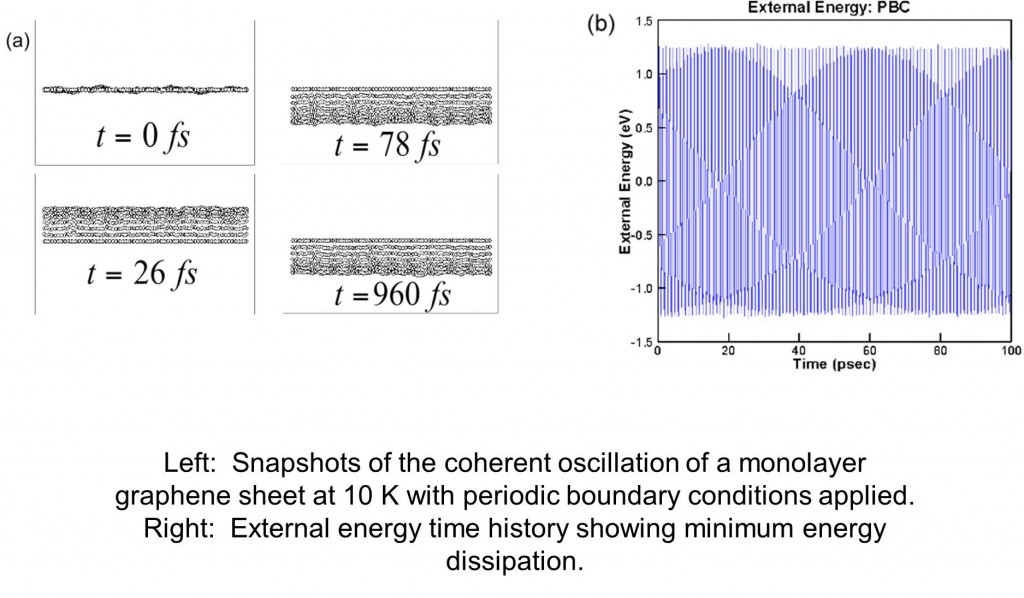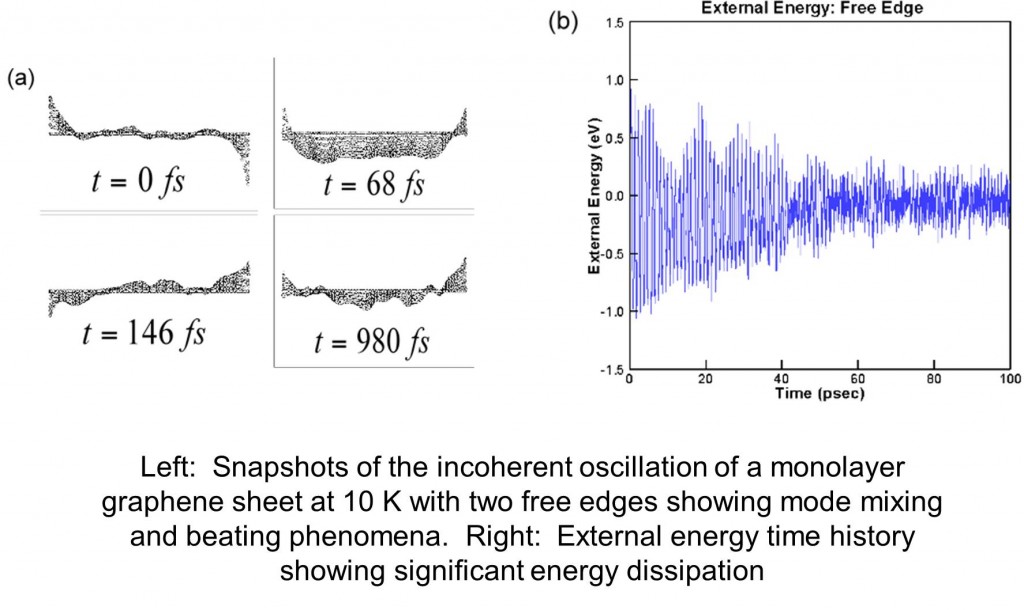Interestingly, the study also found that the free edges of the graphene sheet often had the largest vibrational amplitudes during resonance. To verify this, finite element simulations of the graphene sheet were performed; by introducing non-uniform stresses in the suspended graphene sheet through application of both an in-plane stretch and an in-plane rotation, the authors were able to reproduce the large edge modes of vibration observed experimentally. However, no correlation between the large edge modes of vibration and the Q-factors were established in that work.
Therefore, we have shown that, as opposed to the experiments of Sanchez et al. that the spurious edge modes occur naturally through the MD simulations without application of any non-uniform stresses.? Instead, they arise due to the fact that the carbon atoms at the edges of the graphene sheet have fewer bonding neighbors, and are therefore undercoordinated with respect to the carbon atoms in the interior of the graphene sheet. The lack of bonding neighbors means that the stiffness, and therefore the vibrational frequency of the edge atoms differs from the atoms within the graphene bulk; this difference in vibrational frequency of the edge atoms is illustrated below in Figure (a).
Because this edge induced energy dissipation occurs at 10 K where thermoelastic losses are minimal, we have demonstrated that edge effects are the key intrinsic loss mechanism that causes energy dissipation, and thus low Q-factors in graphene NEMS.

